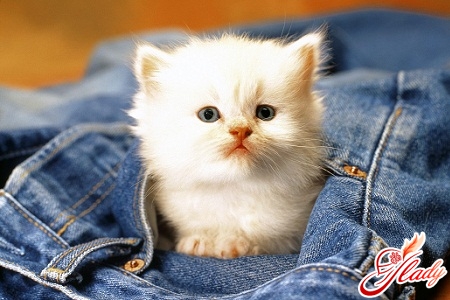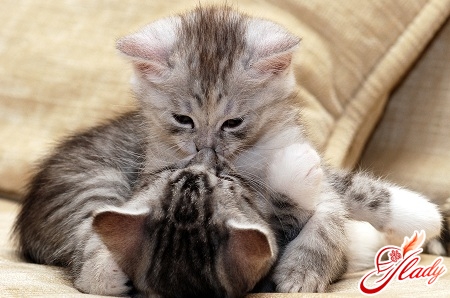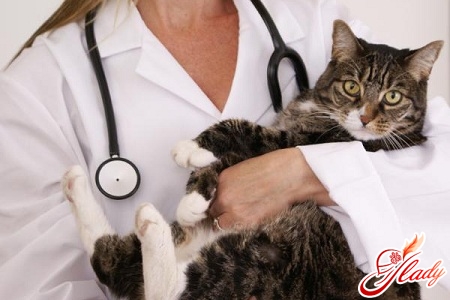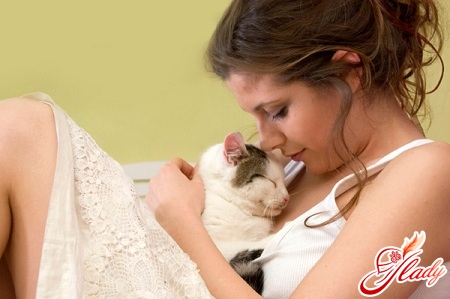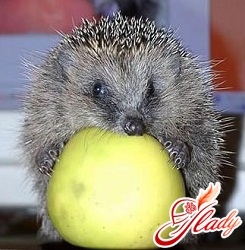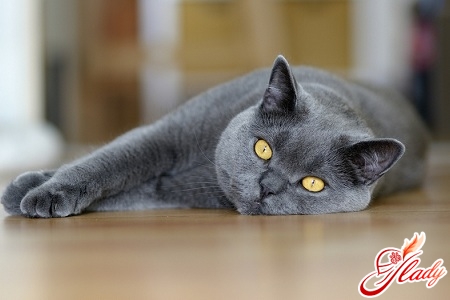 Of course, we love our pets, notdepending on their breed or mongrelness, material or tribal value of bad or complaisant nature, size and appearance. But you will agree that there are breeds of cats and dogs that require special care. And if you are determined to provide your pet with an exhibition career or actively participate in the breeding of the breeding line, then the appearance and health of the animal should be flawless. Among cats, there are quite a few aristocrats who require a lot of attention from the owners. Among them are the beloved by many Britons. Care for cats of this breed can not be called any very special, but there are some nuances here. So what kind of cats, and how to care for them? Let's figure it out.
Of course, we love our pets, notdepending on their breed or mongrelness, material or tribal value of bad or complaisant nature, size and appearance. But you will agree that there are breeds of cats and dogs that require special care. And if you are determined to provide your pet with an exhibition career or actively participate in the breeding of the breeding line, then the appearance and health of the animal should be flawless. Among cats, there are quite a few aristocrats who require a lot of attention from the owners. Among them are the beloved by many Britons. Care for cats of this breed can not be called any very special, but there are some nuances here. So what kind of cats, and how to care for them? Let's figure it out.
Care of hair (grooming)
Wool is the first thing that will require of youincreased attention, and for what will be permanent care. In the British, it is the wool that is characteristic of the breed. The fact is that dense plush British cats are covered with a two-level wool. It is a dense down-wool undercoat that makes their wool so padded, and long coarse hair, which is much thinner, provides shine and silky wool. By the way, one of the important conditions for caring for the hair is proper and balanced nutrition. If an animal receives enough calcium, micronutrients and vitamins from its food, its coat will look perfect. However, only proper nutrition is not enough. We also need additional courtship procedures. Two or three times a week, the cat needs to be combed with a special massage comb called a puffer. It's not even a comb, but a brush that lets you comb out the dead hair and simultaneously massage the animal. First you need to comb your back, leading a puerper on the growth of wool, then the cat is combed against the coat. Then comb the sides, and then go to the neck and cheeks. Here the wool is combed out with neat, short movements towards the muzzle (against the wool). By the way, British cats are one of the few breeds whose representatives gladly endure this procedure and do not completely object when they scratch their wool. After combing on the wool you need to apply a dry shampoo (sold in specialized stores) or powder for grooming. Both shampoo and powder should be applied to dry hair, rubbed, and then combed out again, removing the cosmetic product with dust and grease. After such combing and dry cleaning, the British fur becomes shiny and voluminous. Water procedures to the British are shown only in case of obvious necessity, that is, if the animal really gets dirty. But even with such a need, washing should not be done more than twice a year, otherwise it will have a bad effect on the condition of the coat. If you still decide to wash your Briton, then use a special shampoo for this. What is important for thoroughbred cats is the conformity of the shampoo type to the coat color, which is usually indicated on the label. For British cats of chinchilla color and wool of the color of silver marble, a shampoo for white wool is used. In the process of bathing, make sure that water does not get into your ears, and soap into the eyes of a cat. By the way, the ears for reliability can be plugged with cotton swabs (if the cat does not protest). Water for washing should in no case be hot. The maximum permissible temperature is 40 degrees. After washing, wrap your cat in a towel, blot excess water and transfer the animal to the couch. Intensively wipe the coat is not necessary - the cat will cope with this independently. 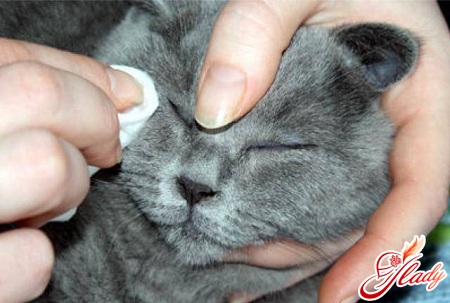
Care for the ears, eyes and teeth
In fact, cats are clean enough. However, even with their pathological tendency to constant washing and cleansing, the result of hygiene procedures is not always satisfactory. Hardly accessible parts of the cat's body, oddly enough, for the cats remains muzzle and ears, which require more thorough care. Therefore, at least a couple of times a week, you need to inspect the ears of the animal and, if necessary, clean them. First, a slightly moistened cotton pad wipes the inner surface of the auricle, and then removes dirt and sulfur in curls and folds with a cotton swab. In a healthy cat, the ears should remain clean, and the dirt accumulating in them should not produce an unpleasant odor. For prevention, it is advisable to use a special liquid for cleaning the ears, and if a bad smell emanates from the ear, then immediately contact the veterinarian. The need for careful care of the eyes of British cats is not. As a rule, the cat keeps an eye on the cleanliness of the eyes. However, once a day, you can wipe the eyes with a moistened cotton disc. Especially this applies to kittens and young animals that are not yet experienced in personal hygiene, and in the corners of their eyes they have dark secretions after sleep. Eyes wipe from the outer corner to the nose of the animal, moistening the wadded disk with boiled water or tea brew. Care of the teeth of cats is also necessary. This procedure is more prophylactic in nature, because over time, tartar is formed on the cat's teeth. And this, in turn, can lead to illness and tooth decay. The fact that the plaque from the remnants of food and salts contained in the cat's saliva, settles on the teeth, accumulates and gradually hardens, turning into the same tartar. By the way, this catastrophe is affected only by domestic cats - wild animals use natural "toothpicks". Once or twice a month, brush your teeth with your cat. First, you can use a special toothpaste and brush (sold at a pet store) or apply a tool at hand. For example, first wipe the cat's teeth with cotton wool soaked in red wine, and then apply a baking soda on them and clean it with a soft toothbrush. If your British cat stubbornly does not want to brush your teeth, hides or shows aggression, then use a special dry food for this purpose or let the cat chew a brain bone (they like it like dogs!)
Care of claws
The claws of a British cat can not be described as special,but, nevertheless, care is required for them, and claws can not be left without attention. A cat inhabiting a city apartment is deprived of the possibility of natural sewing claws, which, by the way, are constantly growing. This explains the irrepressible desire of cats to sharpen their claws on any surface that is convenient for them. They do not sharpen them, making them sharp, but they grind and shorten them. Therefore, first, give the animal this opportunity, having acquired or equipped a special scratching machine. If your British cat categorically refuses to use the prepared for her adaptation, then you will have to claw her hair. Do this no more than twice a month, shortening half the length. It is advisable to use a special claw or to use the services of a veterinarian, since with mismanagement it is easy to damage the living part of the claw or split it, which will lead to the appearance of a wound and further inflammation and suppuration. 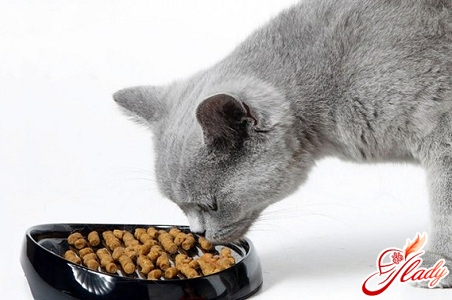
Feeding
Proper nutrition is also a kind of care fora cat, because it is from him largely depends on the general condition of the animal and its appearance. For a full-fledged health, well-being and an impeccable look for a British cat, you need not only a balanced diet, but also a certain regime. Do not forget that the British are dense and massive predators, the main food of which should be protein food. For the regime of feeding your cat, you can use a scheme developed in one of the breeding nurseries of the British. So, experts recommend the following schemes. For kittens from two to four months
For cats from four months and older
Naturally, a bowl of clean water in a catshould always be. Of course, the proposed scheme is not a guide to action and not the only possible variant of the diet regime. Cats, like people, have different taste preferences. Therefore, to make a menu for your pet, you can independently include the sour-milk products, vegetables and fruits, cereals and fish. But about what cats of any breed can not be fed, it is necessary to know and remember all the time. So, you can not include the following foods and ready meals in your cat's diet.
- Ready-made food for dogs, as well as specialized sorts of forages not for their intended purpose. That is, you can not give the cat food for pregnant cats, and for adult animals feed for kittens.
- Bones (except brain beef for cleaning teeth). Bones from a bird or fish can injure the intestines, get stuck in the esophagus and even cause choking.
- River or raw fish. It is proved that the use of fish so beloved by cats disrupts the work of their urinary system and promotes the formation of kidney stones. If you give fish to your cat, then it should be done infrequently and give preference to marine lean fish in a boiled form.
- Fresh milk, butter, cheese. All this can cause frustration of the intestines with unpleasant consequences.
- Smoked, fried, pickled,canned, spicy, sweet, fatty, spicy, salty foods. In short, everything that we use most often for cooking for ourselves. Food from our table for cats is simply dangerous!
And most importantly - be guided by three mainthe principles of feeding your Briton: constancy, separateness and naturalness. Do not forget that only proper nutrition and attentive care will help maintain the health of the cat. But only a healthy and well-groomed animal is able to make an exhibition career or become an ancestor or a continuer of the tribal line. However, if your cat is not elite blood and not impeccable appearance, then it is still necessary to care for her. After all, we are responsible for those who have tamed. We advise you to read:




